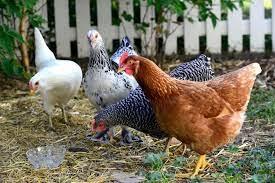 The Centers for Disease Control and Prevention (CDC) has reported an on-going multistate investigation of salmonellosis among families in contact with backyard chickens. The survey documented 219 cases with 27 hospitalizations and one fatality in 38 states. Of those infected, 26 percent were children under five years of age and the median age of the cohort was 29 years. Serotypes isolated included Salmonella Enteritidis, Hadar, Infantis and Typhimurium.
The Centers for Disease Control and Prevention (CDC) has reported an on-going multistate investigation of salmonellosis among families in contact with backyard chickens. The survey documented 219 cases with 27 hospitalizations and one fatality in 38 states. Of those infected, 26 percent were children under five years of age and the median age of the cohort was 29 years. Serotypes isolated included Salmonella Enteritidis, Hadar, Infantis and Typhimurium.
It is recognized that the actual number of infections may be as much as ten-fold higher than the diagnosed cases. Among 87 patients interviewed, 70 percent reported contact with backyard poultry before onset of illness. Approximately 30 percent of those who provided information reported eating eggs from backyard chickens.
 PulseNet identifies individual cases over a multistate region. In addition to surveillance, the CDC conducts antibiotic resistance surveys on available samples. Of 219 isolates evaluated, one third were resistant to one or more of human-use antibiotics, including streptomycin (31 percent), tetracycline (32 percent) with lesser percentages for ampicillin and trimethoprim-sulfamethoxazole.
PulseNet identifies individual cases over a multistate region. In addition to surveillance, the CDC conducts antibiotic resistance surveys on available samples. Of 219 isolates evaluated, one third were resistant to one or more of human-use antibiotics, including streptomycin (31 percent), tetracycline (32 percent) with lesser percentages for ampicillin and trimethoprim-sulfamethoxazole.
Recommendations to prevent salmonellosis as provided by the CDC, include washing hands after contact with backyard poultry, avoiding close contact with live birds and their environment and supervision of children in the vicinity of flocks. While theoretically reducing the risk of infection these precautions are generally ineffective as demonstrated by the incident rate.